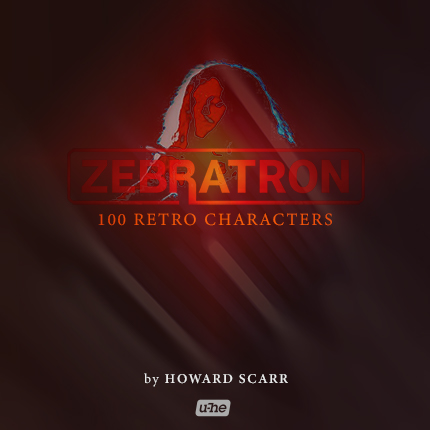

Depending on how far you drag the segment left or right, it will give it a curved shape. If you click and drag on the segment in between the handles, it will change its shape. Right-click the first handle you’d like and click “loop start”, and then right-click the last handle and click “loop end”. You can easily assign a loop start and end point, so then it will just cycle the same pattern over and over. You have to set up a loop first, so let me go over that. Even if you have set the timing to Sixteenth, for example, changing the Attack, Loop, and Release can alter the timing as well. Above that section are more controls that can affect the timing.

You can also set it to Seconds, which is non-synced. It can sync it to different amounts, such as a Sixteenth, Quarter, or Note. The timing can be changed using the controls on the left side. The third icon will only allow you move a handle up or down (not left or right), and the others handles are not affected. The second icon, called “Shift”, will let you move it where you want, but if you move to the right, it will shift all the other handles over in that same direction. The first one, which is called “Single”, lets you move a handle, and the other handles won’t change their positions. Right above the first MSEG button (MSEG1), there are three icons to change how the handles work. You then have to adjust the control you assigned it to, or you won’t hear any change to the sound. To assign it to a certain parameter, you just click on an unassigned control (next to the one you want to modulate) such as Tune or Volume, and select one of the four MSEGs in the list that appears. The timing on the grid is from left to right, so if you drag a point over to the left, it gives the MSEG less time to get to that point. The amount of modulation is determined in part by how far up (or down) the handles are placed. You can add up to 33 handles to the MSEG. These can be dragged up or down, and left or right. It has a grid from left to right, and the envelope is a line with dots on it. OK, so how does it work? You just click on the “MultiStage EG” button to open its display. Those same presets may help spark new ideas when you are creating your own. As you skim through the Zebra presets that use the MSEG, you will find some very interesting ways that it has been used. To load them, left-click on the button on the right-hand side, or right-click on that same button for more options, which includes saving your own creations. The MSEG presets you design can be saved and loaded for later use. It is basically a customizable envelope that can be assigned to nearly anything for modulation. There are four MSEGs in all, and each has identical controls and options.

The MSEG is very powerful, and I thought it deserved a whole section to detail how it functions. Zebra’s MSEG (Multi-stage Envelope Generator) brings many useful possibilities to your preset design. I’d like to take more time to go over one of my favorite parts of Zebra in more detail. Since Zebra has already had many reviews in the past, giving overviews of its basic functions and features, I will take a slightly different perspective. To get this article moving along, I decided to change things up a bit. Using its Modulation Matrix and MSEGs (Multi-stage Envelope Generator), along with its many filter and distortion types, the possibilities for sound design are nearly endless. There are many different screen sizes available, from 412 x 295 all the way up to the cinematic 2060 x 1475.
UHE ZEBRA PRESETS PC
If I had to sum up Zebra’s features in a few sentences, I’d mention it is a four oscillator modular synthesizer for the PC and Mac, and has an easy to use grid to set up its many modules.
UHE ZEBRA PRESETS PRO
The latest version, Zebra 2.7, includes a new distortion module, 100 new anniversary presets designed Howard Scarr, and AAX support, which has been added for the Pro Tools users out there. the-results-better-late-than-never-23986 Zebra won the top honors in the categories for Best Overall Instrument Plug-in and Best Synth Plug-in. The audio news and production forum at KVR Audio recently ran a poll, asking its members to vote on a variety of subjects. It is known for its top notch sound, ease of use, and great flexibility. Over the years, Zebra has won many awards, and remains at the top of the “go-to” list for many artists around the world. Another synthesizer plugin they created has recently celebrated its 10th anniversary, and it goes by the name of Zebra. They’re the creators of the softsynth plugins ACE and Diva, both of which have won much critical acclaim.
UHE ZEBRA PRESETS SOFTWARE
The German-based software company u-he is the developer of high quality audio software for PCs and Macs. It continues to wow users with its versatile features, superb sound, and that undefinable u-he vibe. The venerable synth Zebra is now at version 2.7.


 0 kommentar(er)
0 kommentar(er)
